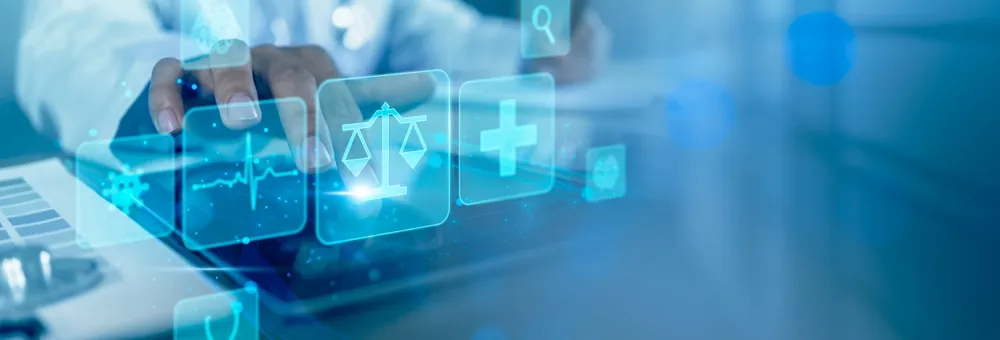With the current timeline for eCTD 4.0 implementation in the European Union expected to begin with voluntary pilots this year, there has been a growing need to prepare the industry for the new standard.
This has resulted in a series of steps being put in place by the European Medicines Agency (EMA) in March1. First, the agency issued a new draft version 1.1 of the EU eCTD 4.0 Implementation Guide, published on 15 March and currently available for consultation. This was followed by a workshop on 27 March. The workshop was designed for software vendors and industry participants, with the objective of collecting feedback on the draft.
The newly released guide should be considered in conjunction with the ICH eCTD 4.0 V1.5 Implementation Guide, which defines the overall structure and concepts of eCTD 4.02.
Compared to the previous version of the EU implementation guide, the main changes in version 1.1 are that it no longer contains details on bi-directional communication, as this is not foreseen to be implemented by EMA for the time being, and there are additions to the handling of grouped submissions. The EU Implementation Guide defines a grouped submission as ‘a regulatory activity that impacts multiple dossiers’1. In the EU regulatory context this applies for example . to grouped variations, worksharing variations and periodic safety update report single assessment (PSUSA) procedures. eCTD 4.0 allows to combine such applications with largely identical content into a single transmission package where documents are included only once and referenced by the different applications, or not included at all if they had been submitted previously in another context.
Gaps and clarifications
The workshop’s objective was to identify potential gaps and clarifications before publishing the final version to ensure a common understanding of how European agencies intend to implement the standards. The agency is also eager to ensure that tools from different vendors don’t result in eCTDs deviating from what EMA and national competent agencies (NCAs) are expecting.
While all submissions will ultimately be subject to eCTD 4.0 implementation, the workshop largely focused on Centralised Procedure (CP) applications to EMA, since implementation will initially only apply to such applications, with submissions to national agencies to follow later. The reason for this gradual approach is that CP products are being considered the simpler use case, with only one agency – EMA – involved in the complete product life cycle and a common repository is already in place.
The currently planned eCTD 4.0 implementation timeline for CP submissions foresees a voluntary technical pilot in 2024, followed by a voluntary business pilot later in 2025. Optional use of eCTD 4.0 will be open to everyone by 2025. It is envisioned that eCTD 4.0 will be the mandatory submission format for CP applications from 2027. Optional eCTD 4.0 applications to the national agencies for National, Mutual Recognition and Decentralised Procedures are also expected to begin in 2026.
Before this materializes there is still some work to do. As an outcome of the workshop, the current draft Implementation Guide version 1.1 needs to be enhanced. Applicants participating in the workshop have asked for more examples on handling document replacements and document reuse. These examples might be included in the next iteration of the implementation guide or published in a separate best practice document. EMA will also need to work on a set of validation criteria before eCTD 4.0 can be released for use.
What industry needs to do
Although there is still much for EMA to do, applicants will also need to prepare for the change. Besides aligning with their software vendors on the necessary updates or new installations, it is advisable that they familiarize themselves with at least some of the new eCTD 4.0 terminology and how it relates to the features that were familiar and widely used with the previous eCTD 3.x format.
New features, currently unfamiliar to European eCTD users, such as document reuse across applications, will also provide some challenges. Our advice is that applicants look carefully into their internal document flows and how this potentially transfers document metadata from the content management to the submission compilation system, as this may have a different impact on their usability in eCTD 4.0.
Finally, it is recommended that applicants prepare for the time when eCTDs can no longer be reviewed without a dedicated eCTD 4.0 review tool. This will likely require adoption of a separate, dedicated tool or opening up the review function of their current eCTD tool to a much broader range of people in their company.
EMA has proposed a two-phased approach to enable the pilots to start before the end of the year. The first pilot will focus on technical testing. Applicants and software vendors are encouraged to submit test submissions in eCTD 4.0 format for both new marketing authorization applications and lifecycle submissions for products for which eCTD sequences in version 3.2.x already exist. The latter are required to also test the eCTD 4.0 forward compatibility mechanism. Placeholder documents without content can be used in the submissions for the technical pilot, and EMA’s eSubmission Test Environment is to be used.
Vendors will need to contact EMA for access, but to test the forward compatibility mechanism they will probably need to partner with applicants, as this requires EMA to copy the previous eCTD lifecycle sequences of an existing product into the Test Environment first.
EMA aims to open the technical pilot to everybody who wishes to participate, but restrictions may be set up if the agency is overwhelmed by too many testers. The details on how to participate will be communicated by the agency once the exact timing for the start of the technical pilot becomes clearer.
A similar procedure is planned for the second phase, the business pilot, which will follow the technical pilot after a couple of months. For the business pilot, applicants should use real or realistic documents and applications and will have different options. These include to submit in eCTD 4.0 format to the Test Environment first, and to Production Environment later; submit in eCTD 4.0 format to the Test Environment (for testing) but simultaneously in eCTD 3.2.2 format to the Production Environment (for assessment); or submit in eCTD 4.0 format to the Production Environment only. During the second phase, EMA also wishes to receive both MAAs and lifecycle submissions with forward compatibility.
EMA acknowledges that eCTD 4.0 is a work in progress and there is still a lot to do before it will routinely be used in Europe. Nevertheless, there are steps industry can take now to facilitate adoption once implementation gets underway in 2026, and participation in the pilots is certainly one of them.
About the author:
Karl-Heinz Loebel is Director and Principal Consultant, Regulatory Operations, at Cencora PharmaLex. With more than 18 years of experience in regulatory operations, he has built his expertise in data management and the electronic exchange of information with regulators and has been a constant contributor to shared industry/agency forums on digital data exchange for the past decade.
1 eSubmission, eCTD 4.0 News, EMA. https://esubmission.ema.europa.eu/eCTD%20NMV/eCTD.html
2 ICH electronic Common Technical Document – eCTD v4.0, ICH. https://ich.org/page/ich-electronic-common-technical-document-ectd-v40








